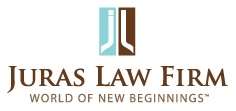How is Chapter 13 & 7 Bankruptcy Different?
Chapter 7 Bankruptcy is a “liquidation” bankruptcy. In Chapter 7, the debtor keeps certain assets that are exempt (certain equity in the house and car, furniture, etc.). The remaining (non-exempt) assets, if any, are sold by the bankruptcy trustee and the proceeds are distributed to the creditors. Individuals, corporations and partnerships may file a Chapter 7 bankruptcy.
Chapter 13 Bankruptcy is repayment of certain debts over a period of 3 or 5 years. In Chapter 13, the debtor prepares a plan in which he/she agrees to pay a certain portion of the future income to the bankruptcy trustee for payment to the creditors. Only individuals with regular income that owe unsecured debts of less than $394,725 and secured debt of less than $1,184,200 may file a Chapter 13 bankruptcy.
